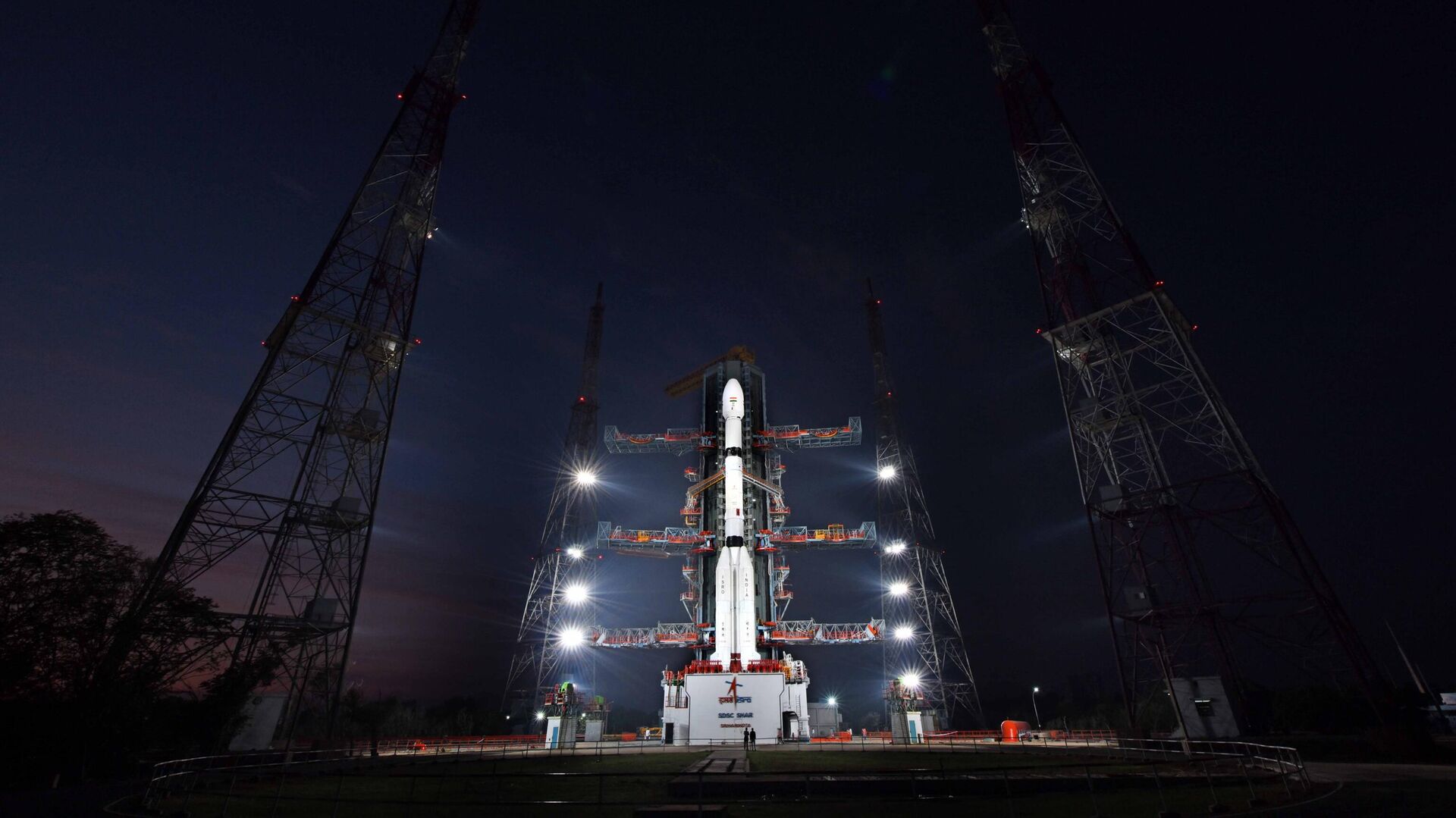https://sputniknews.in/20240216/isros-naughty-boy-rocket-to-launch-weather-satellite-tomorrow-6570324.html
ISRO's 'Naughty Boy' Rocket to Launch Weather Satellite Tomorrow
ISRO's 'Naughty Boy' Rocket to Launch Weather Satellite Tomorrow
Sputnik India
The INSAT-3DS will be India's fourth weather satellite, with the three currently operational being the INSAT-3D, INSAT-3DR, and OceanSat.
2024-02-16T17:41+0530
2024-02-16T17:41+0530
2024-02-16T17:41+0530
science & tech
science & tech
india
andhra pradesh
indian space research organisation (isro)
india meteorological department (imd)
space satellite
space industry
space exploration
space rocket
https://cdn1.img.sputniknews.in/img/07e8/02/10/6575311_0:321:3071:2048_1920x0_80_0_0_883b74c4c46088d30a62d47d5c9d72cd.jpg
The Indian Space Agency said that it is set to launch a weather satellite, the INSAT-3DS, on Saturday at 5:35 pm from Sriharikota's Andhra Pradesh on board a Geosynchronous Satellite Launch Vehicle (GSLV), also dubbed as the "Naughty Boy" by the Indian Space Research Organisation (ISRO).The GSLV has a failure rate of 40 percent: 6 of its 15 flights have failed. The last GSLV launch, on 29 May 2023, was successful.The GSLV is a three-stage rocket that is 51.7 meters long, has a lift-off weight of 420 tonnes, and uses an India-made cryogenic engine.Speaking with media, ISRO officials said that the new weather monitoring satellite will enhance meteorological observations and monitoring of land and ocean surfaces for weather forecasting and disaster warning.The INSAT-3D has been operational since 2013; its lifetime is about to be complete; hence, the ISRO is required to launch a weather satellite that can replace it.
https://sputniknews.in/20240206/india-unveils-first-hypervelocity-missile-test-facility-for-space--defence-research-6452907.html
india
andhra pradesh
Sputnik India
feedback.hindi@sputniknews.com
+74956456601
MIA „Rossiya Segodnya“
2024
Deexa Khanduri
https://cdn1.img.sputniknews.in/img/07e6/0c/13/138923_52:0:533:481_100x100_80_0_0_cadf23d341691fc65ff2b22fd1afe584.jpg
Deexa Khanduri
https://cdn1.img.sputniknews.in/img/07e6/0c/13/138923_52:0:533:481_100x100_80_0_0_cadf23d341691fc65ff2b22fd1afe584.jpg
News
en_IN
Sputnik India
feedback.hindi@sputniknews.com
+74956456601
MIA „Rossiya Segodnya“
Sputnik India
feedback.hindi@sputniknews.com
+74956456601
MIA „Rossiya Segodnya“
Deexa Khanduri
https://cdn1.img.sputniknews.in/img/07e6/0c/13/138923_52:0:533:481_100x100_80_0_0_cadf23d341691fc65ff2b22fd1afe584.jpg
insat-3d, insat-3d, insat-3dr, oceansat, insat-3ds satellite, geosynchronous satellite launch vehicle, gslv, naughty boy, gslv,
insat-3d, insat-3d, insat-3dr, oceansat, insat-3ds satellite, geosynchronous satellite launch vehicle, gslv, naughty boy, gslv,
ISRO's 'Naughty Boy' Rocket to Launch Weather Satellite Tomorrow
Deexa Khanduri
Sputnik correspondent
The INSAT-3DS will be India's fourth weather satellite, with the three currently operational being the INSAT-3D, INSAT-3DR, and OceanSat.
The Indian Space Agency said that it is set to launch a weather satellite, the INSAT-3DS, on Saturday at 5:35 pm from Sriharikota's Andhra Pradesh on board a Geosynchronous Satellite Launch Vehicle (GSLV), also dubbed as the "Naughty Boy" by the Indian Space Research Organisation (ISRO).
The GSLV has a
failure rate of 40 percent: 6 of its 15 flights have failed. The last GSLV launch, on 29 May 2023, was successful.
The GSLV is a three-stage rocket that is 51.7 meters long, has a lift-off weight of 420 tonnes, and uses an India-made cryogenic engine.
Speaking with media, ISRO officials said that the new weather monitoring satellite will enhance meteorological observations and monitoring of land and ocean surfaces for weather forecasting and disaster warning.
"Indian weather satellites have been a game changer. Satellites are truly the eyes in the sky that have helped
India forecast cyclones with great precision", said Dr M Ravichandran, secretary of the Ministry of Earth Sciences, told a reporter.
The INSAT-3D has been operational since 2013; its lifetime is about to be complete; hence, the ISRO is required to launch a weather satellite that can replace it.
"For a tropical country like India where high-impact convective events are very common, it is necessary to have good quality, high-density observations both on the spatial and temporal scale", Dr Ashim Kumar Mitra,
project director of the Satellite Meteorology Division, India Meteorological Department (IMD), told Indian media, explaining how weather satellites give data for forecasts.



